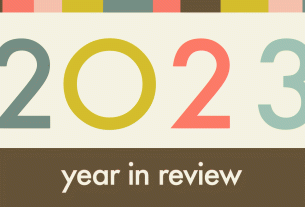Businesses all across the world have switched to remote working models as a result of the COVID pandemic. Currently, some businesses are allowing workers to go back to their offices, but many are switching permanently to hybrid or remote work arrangements. Numerous advantages can be had from both setups, but they also have the potential to pose serious difficulties.
Robert McKenna III, a well-known medical malpractice lawyer, is a partner in the Huntington Beach, California law firm Kjar, McKenna & Stockalper LLP. We recently had a conversation with him to get his tips on managing hybrid office setups and learn how his company’s foresight and proactive approach helped it thrive as the COVID pandemic wore on.
Seeing the COVID Storm on the Horizon
As soon as people started to understand the pandemic’s effects, they realized that continuing with “business as usual” wouldn’t be an option. As business leaders began comprehending the fast-changing circumstances and implementing workable solutions, time started to run out. Nearly every element of how individuals interacted, both personally and professionally, was drastically altered by the coronavirus.
There isn’t really a way to qualify how the epidemic affected society, even though the severe effects may eventually be quantified with numbers and statistics. There has, however, been a silver lining for business managers like Robert McKenna, who had the vision to spot the logistical storm coming when it was still on the horizon and was able to mitigate some of its destructive power.
McKenna correctly predicted that COVID would prove to be a far more significant dilemma than most people thought. McKenna had a brief exchange with a contact who worked at a trading and venture capital firm in February 2020, when cases of the pandemic started to be reported across the U.S., which gave him the unmistakable impression that disaster was looming.
Taking An Early Warning Seriously
McKenna was able to obtain information from this company’s virologists and immunologists that suggested that the coronavirus might, in fact, turn out to be a grave concern. McKenna had a gut feeling he should take this warning seriously. McKenna believed it was “better to be safe than sorry,” even if it all ended up being for naught. The company would need to prepare backup plans “just in case,” McKenna told his office manager and partners, adding that there was a chance their offices might need to close for a few weeks.
People were initially skeptical of McKenna’s theories. But McKenna ensured that his business had a basic framework in place that would enable it to continue operating even if the pandemic made it difficult or impossible for the company’s employees to enter the firm’s offices. Examining his enterprise’s operational practices, McKenna concluded that most work could probably be done offsite, with the exception of a few small hands-on activities that could be completed in a few hours each day.
A national emergency was declared for COVID in March 2020, just as McKenna’s firm was preparing to attempt a dry run of a reduced workforce exercise at the smaller of the company’s two offices. Fortunately, the transition from the company’s onsite work model to a hybrid one was largely painless because of McKenna’s foresight. Despite the process moving more quickly than he’d hoped, McKenna felt good about having a strategy in advance.
Hybrid Office Arrangements
In-person and remote work combine in a hybrid model. In hybrid work arrangements, employees spend time each week onsite at a company’s offices and the rest of the time working remotely. Although managing distant teams can be difficult, this method has the potential to offer the “best of both worlds.” Fortunately for us, McKenna has outlined a few crucial success strategies that can help hybrid office arrangements work out as well as they have for his firm.
Why Should Hybrid Models Be Considered?
As the pandemic progressed, CEOs like McKenna realized that employees could work remotely and still be quite productive. “It became clear that most people can get their job done remotely and that there’s not a decline in productivity or work product,” thought McKenna. “People can manage their time and their work.”
A better work-life balance for employees and time and money saved on worker commuting costs were other advantages that businesses identified in remote work arrangements. But while this was going on, teamwork and communication occasionally faltered, and some employees discovered that they still liked working in the office.
On reflection, McKenna observes that “There were some people that voluntarily came into the office. For some folks, their apartment or home was not really conducive to trying to work for eight hours a day.”
McKenna’s team members made it plain that their new preference was a hybrid work model when a return to offices became a serious possibility. “We decided that experienced administrative staff would only come in two days a week because there are still some things that work better with having somebody in the office,” McKenna explains. “They get to pick what two days they come in. It’s been a very collaborative, cooperative effort to make sure there’s at least a skeleton crew every day, so not everybody’s working from home on Mondays and so on. We’ve been doing that since May, and it’s been working well.”
The Advantages and Disadvantages of Hybrid Working Models
While being in an office or working remotely both offer benefits, a hybrid work style can include the best elements of each. Employees can commute for less money and time, enjoy more freedom, and still visit the office when necessary for location-specific activities and collaborative working. While some employees believe they’re more productive at home, others think they’re more effective in an office setting. The flexibility of hybrid arrangements can fit a variety of work preferences and styles.
McKenna is sure that improved scheduling is possible with both remote and hybrid work modes. “Trying to get five people from across the country to meet in Chicago on a Thursday or a Friday was almost impossible,” he admits, “and now you could probably line that meeting up within a week. You could just find a slot of time for everybody to get on a Zoom call.”
McKenna acknowledges that alternating between in-person and remote work can be emotionally taxing. Hybrid arrangements can also raise genuine concerns about remote work, such as potential declines in employee loyalty and collaboration. Businesses should avoid creating barriers between in-office and remote workers, and they should ensure that everyone has access to the tools and resources they need to perform their duties.
A company should be able to succeed with a hybrid work model if proper policies and procedures are in place.
How Robert McKenna Manages Hybrid Offices
McKenna discovered what tactics worked and what didn’t as he made the transition to a hybrid work model. His method relies on supplying the necessary work items, establishing healthy boundaries, tracking processes, and building functional workspaces.
Supplying Necessary Work Items
Employees must have the tools and supplies they need to do their jobs because they’re going to spend significant portions of their workweeks at home. Do employees have access to the programs and files they’ll need to do their work? Is their internet reliable? Are there any additional items they’ll require to complete their tasks?
“People needed a good chair. Some people didn’t have laptops. So, we got them a laptop. We’re cloud-based, so people can be anywhere and sign in any time,” asserts McKenna.
Establishing Healthy Boundaries
Setting healthy limits can be difficult for those who work from home. One factor in this is that a person’s “office” and their “home” are frequently not separated from one another. This increases the risk of burnout for some employees by tempting them to work longer hours. You should encourage your employees to develop healthy limits; you can set a good example by doing the same yourself, regardless of where you are.
According to McKenna, as remote work models gain popularity, expectations for nearly continuous contact have increased. “People say, ‘I know you’re on vacation, but we have a virtual conference. Can you do that? You have internet.’” McKenna explains. “And the turnaround time people expect on text messages and emails has dramatically shrunk. People want instantaneous reassurance that you’re available to respond at any time.”
Over time, poorer productivity and exhaustion can result from these extended workdays and demands for nearly continuous contact. To combat these, you should encourage healthy work habits, such as not always replying to emails right away and turning off the computer at a predetermined time.
Additionally, if you’re on vacation, let folks know, so they can schedule meetings or other work-related communication without you. These guidelines for vacations should be applied to the entire staff. “You have to avoid the temptation to say ‘yes’ too much during that timeframe,” counsels McKenna.
Tracking Processes
You should start by monitoring your company’s business processes if you’re thinking of switching to a hybrid work model. Think carefully about which jobs can conceivably be completed at home versus those that must be done in your company’s offices. Ask if all members of your team have to report to work on the same days.
McKenna recalls, “I spent two or three weeks looking at the business to determine what needed to be done in person. I realized all we needed was one person in each office to pick up the mail, scan it, and send it off to whoever required it. We also needed the same person or a different person to come back in the afternoon to print, address, and send outgoing mail for that day.”
McKenna worked with his staff to decide who else would be at the office each day of the week and chose two days for each of his firm’s administrative employees to be there.
Depending on your company’s processes and needs, a hybrid work model might operate differently. While some hybrid work arrangements might mandate that employees report to work three days per week (on the same days or on a staggered schedule), others might permit flexible scheduling as long as everyone is present for meetings and special events. To determine what’s best for your business, you should create an inventory of all the work functions at your organization.
Building Functional Workspaces
You need to create a functional workspace at home if you want hybrid work models to be successful. You should offer employees the necessary tools and resources and then inquire further to see if anything else is needed for their remote workspaces.
You should pick a spot in your house where you can be productive yourself. Choose a place where you can think clearly and concentrate. McKenna advises against doing this in a bedroom. A separate workspace-like area is necessary to increase productivity and motivation.
Developing a work-from-home regimen that puts you in the right state of mind for working will also be beneficial. McKenna advises, “Whatever you do on the weekend, don’t do [that] during the week while you’re working. Create a separate routine, even if it’s putting on a different kind of shirt or just showering and shaving when you wake up.”
How Hybrid Office Setups Can Function Successfully
Your company’s transition to a hybrid office model will probably take some time, but if you follow the guidelines McKenna has laid down, you should be able to build a strong foundation for your company. The secret is to take your time, look carefully at your business’s processes and policies, and decide which type of hybrid work model will work best for your team. Establish procedures, strategies, and objectives, so your staff employees are aware of all expectations.
Establish an efficient home workspace for yourself, and make sure your team has all it needs to succeed. Make sure your team establishes healthy boundaries to prevent employee burnout. And maintain similar boundaries for yourself; whenever it’s feasible, serve as an example to follow. You should be able to develop a hybrid work arrangement that’s effective, balanced, and productive for both you and your staff once your foundation is in place.



